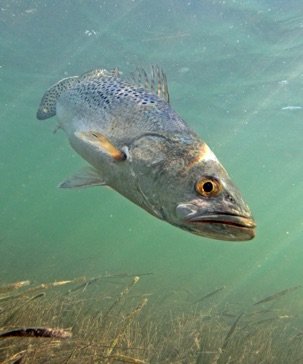Hydrophones installed throughout Aransas and Mission Bay — and the anglers plying those same waters — are necessary tools in a new study of spotted sea trout migration by marine scientists at the University of Texas Marine Science Institute. The project is being paid for by the Texas State Aquarium’s Wildlife Care, Conservation and Research (WCCR) fund.
“The project provides a unique opportunity to get local anglers directly involved,” said Dr. Brad Erisman, who will use the new funds to help determine where spotted sea trout are spawning around Port Aransas. “Mapping spawning sites for spotted sea trout will be invaluable to state and federal agencies tasked with maintaining healthy, sustainable fisheries and ecosystems that benefit local communities and livelihoods.”
Anglers are asked to capture, identify and release females ready to release eggs. They should then send photos of female fish ovaries along with information on location and time of collection. These findings will be combined with data from mobile hydrophone surveys and fixed hydrophone sites to create a detailed map of locations and characteristics of spawning habitat.
The hydrophones, which are being installed throughout Aransas Bay, track mating calls of male fish. Male sea trout make courtship sounds unique to the season and location of their spawns.
Improved management of spotted sea trout resources should help ensure sustainable trout populations, improve fishing opportunities, and provide for successful fishing experiences by local anglers, Erisman said.
Underwater migrations tracked by mating calls on hydrophones

Sea trout will be the focus of a study by Dr. Brad Erisman to learn more about where they spawn. Photo by Evan D'Alessandro